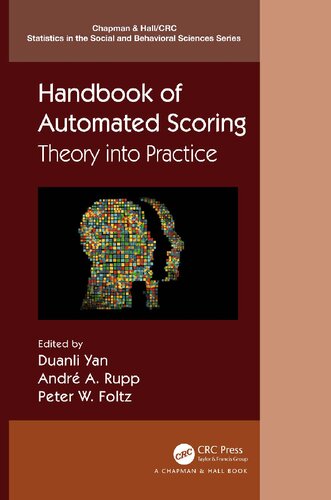

Most ebook files are in PDF format, so you can easily read them using various software such as Foxit Reader or directly on the Google Chrome browser.
Some ebook files are released by publishers in other formats such as .awz, .mobi, .epub, .fb2, etc. You may need to install specific software to read these formats on mobile/PC, such as Calibre.
Please read the tutorial at this link: https://ebookbell.com/faq
We offer FREE conversion to the popular formats you request; however, this may take some time. Therefore, right after payment, please email us, and we will try to provide the service as quickly as possible.
For some exceptional file formats or broken links (if any), please refrain from opening any disputes. Instead, email us first, and we will try to assist within a maximum of 6 hours.
EbookBell Team

4.7
76 reviews"Automated scoring engines [...] require a careful balancing of the contributions of technology, NLP, psychometrics, artificial intelligence, and the learning sciences. The present handbook is evidence that the theories, methodologies, and underlying technology that surround automated scoring have reached maturity, and that there is a growing acceptance of these technologies among experts and the public."
From the Foreword by Alina von Davier, ACTNext Senior Vice President
Handbook of Automated Scoring: Theory into Practice provides a scientifically grounded overview of the key research efforts required to move automated scoring systems into operational practice. It examines the field of automated scoring from the viewpoint of related scientific fields serving as its foundation, the latest developments of computational methodologies utilized in automated scoring, and several large-scale real-world applications of automated scoring for complex learning and assessment systems. The book is organized into three parts that cover (1) theoretical foundations, (2) operational methodologies, and (3) practical illustrations, each with a commentary. In addition, the handbook includes an introduction and synthesis chapter as well as a cross-chapter glossary.